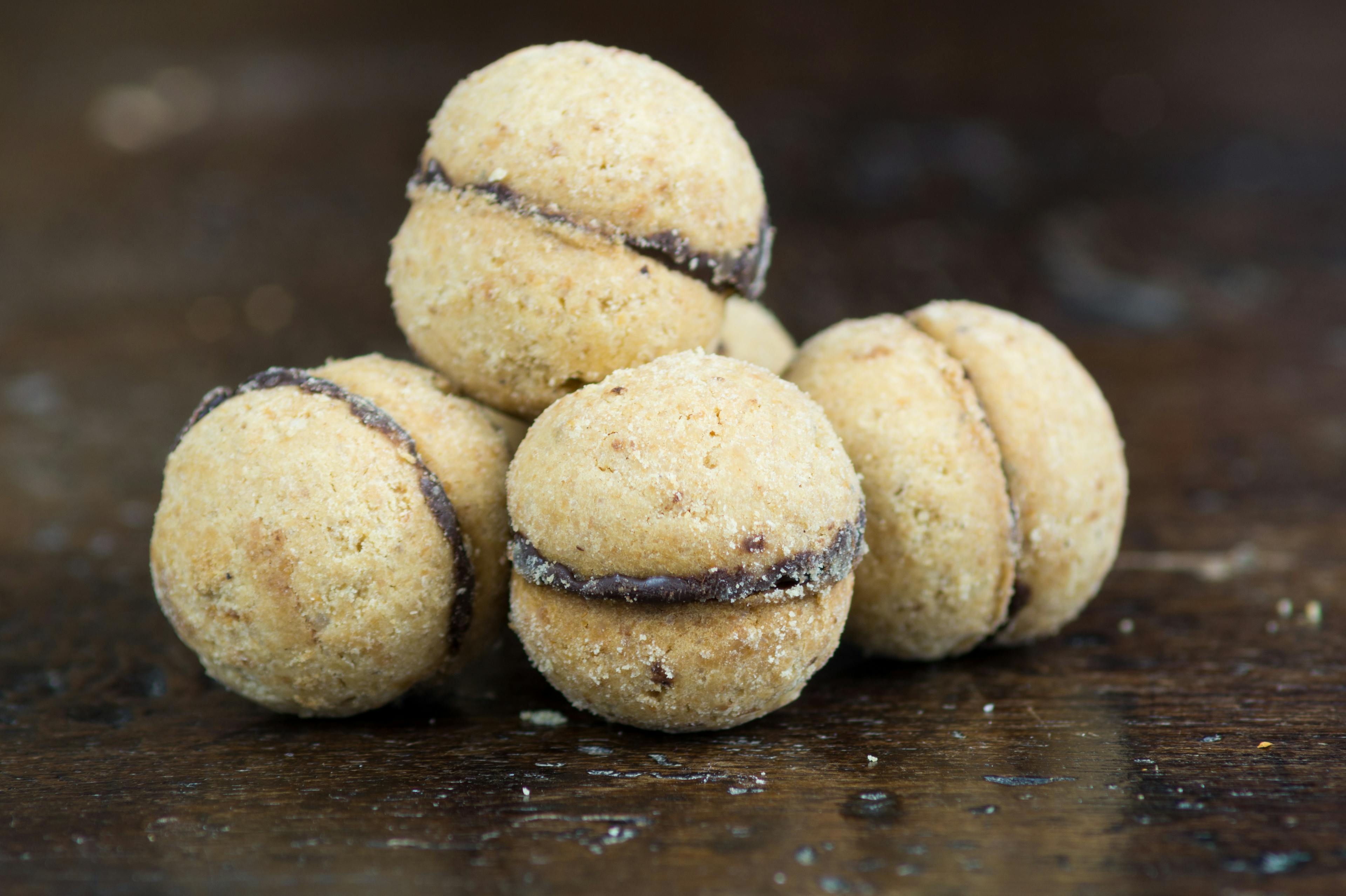

Valentine's Day, the sweetest celebration of the year, is just around the corner—the holiday of love.
If you want to surprise your partner with something special, why not step into the kitchen and bake a dessert to enjoy together, with a name that's absolutely perfect for the occasion: Baci di Dama (literally "Lady's Kisses")!
They’re a bit tricky to make, but it’s worth the effort, and they’ll leave a lasting impression. Let’s discover how to prepare them together!

Baci di Dama (Lady's Kisses)
Sweet, little hazelnut cookies, perfect with a cup of coffee
Ingredients
- Yields 50-60 cookies:
For the cookies:- 200 g butter, softened
- 200 g hazelnut flour or ground hazelnuts
- 200 g plain flour
- 150 g caster sugar
- Pinch of salt
For the filling:- 100 g chocolate (dark)
- 200 g hazelnut paste (unsweetened)
Method
- In a large mixing bowl, combine hazelnut flour, all-purpose flour and salt, and leave to one side.
- In another mixing bowl, beat the butter and sugar with an electric whisk until creamed. Add the flours to the bowl, and continue to mix at moderate speed until it forms a dough.
- Remove the dough from the bowl, wrap in clingfilm and leave to rest in the fridge for at least 2 hours. When it is ready, take small pieces of dough and roll them into little balls (8-10 g). Place them on a lined baking tray.
- Leave the dough balls to set in the freezer for another hour. It's important for them to be firm before cooking!
- Pre-heat the oven to 170° C, place the balls onto a baking tray lined with parchment paper and bake for approximately 15 minutes. Leave on the parchment paper to cool. They will be in hemisphere shapes after cooking.
- Melt the dark chocolate in a bain marie, then gradually stir in the hazelnut paste. When the filling has cooled down to room temperature and is quite thick, spread some of the cream onto a cookie using a teaspoon, then stick the cookie together with another one.
- Repeat the process until you run out of cookies.
- Once the chocolate filling has cooled solid, your baci di dama are ready to enjoy!
Tip: try to keep the biscuits on the small side so they cook evenly.
The Baci di Dama: the most romantic cookies in the world
They are among the finest examples of Piedmontese pastry and have delighted sweet-tooths since the 19th century. As often happens in the culinary world, the origins of the most famous creations are shrouded in a magical mix of history and legend, and the Baci di Dama are no exception. To trace their roots, we must ideally walk through the halls of the royal palaces of the Savoy dynasty: it was here that King Victor Emmanuel II asked his trusted cooks to create a new dessert with an unprecedented taste and shape.

And so the Baci di Dama were born, the distinctive pastries where two small crumbly cookies are joined in a sort of kiss, held together by a thin layer of delicious dark chocolate cream. Outside of legend, the Baci di Dama originate from Tortona, a town in Piedmont in the province of Alessandria.
The Variants of Baci di Dama
Over time, the original recipe has undergone changes and adjustments. In the early 1800s, Cavalier Stefano Vercesi replaced hazelnuts with almonds, which were more refined but also more expensive, creating the so-called "baci dorati" ("golden kisses"). Another variant, the Baci di Alassio, was created by Pasquale Balzola and includes the addition of cocoa and honey in the dough.
The Origins of Valentine’s Day from the Lupercalia
Valentine’s Day originated in 496 AD under Pope Gelasius I. As often happened in history, this celebration represents a Christian "adaptation" of a pagan festival. Specifically, today’s Valentine’s Day is believed to be a moralized and diluted version of the far more unrestrained and transgressive Lupercalia, pagan celebrations in honor of the fertility god Lupercus held on February 15.

Offering your partner a bouquet of flowers or a box of sweets, as is customary today, was not part of the festivities back then. Instead, during the height of the celebrations, Roman women allowed themselves to be struck with whips by strapping young men who roamed the streets either naked or wearing nothing more than a skimpy leather skirt. While the ritual lacked romance, it was believed at the time to promote fertility.
From the Lupercalia to Today’s Valentine’s Day
As one might imagine, such celebrations were incompatible with Christian morality. Thus, Pope Gelasius I decided to strip the festival of all explicit references to sexuality and move it to the day before, February 14, the feast day of Saint Valentine, a Christian martyr who was beheaded in Terni in 274 AD.

Saint Valentine, Patron Saint of Lovers
The sources are unclear on how Saint Valentine became the patron saint of lovers. However, it seems that the connection between the saint and love can be traced back to the 14th-century English poet and writer Geoffrey Chaucer, who, in his poem "Parlement of Foules", associated Saint Valentine with Cupid.
